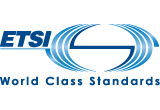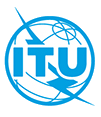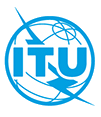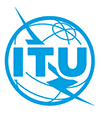Cloud computing – Cloud services and devices: data flow, data categories and data use — Part 1: Fundamentals
Cloud computing data flow, data categories and data use: Fundamentals

Cloud computing data flow, data categories and data use: Fundamentals

Common technologies and techniques

Cloud Computing terminology

The present document defines a framework for use within ETSI NFV ISG to coordinate and promote public demonstrations of Proofs of Concept (PoC) illustrating key aspects of NFV.
The objective for the PoCs is to build commercial awareness and confidence and encourage development of an open ecosystem by integrating components from different players.
This framework outlines:

This standard defines topology, functions, and governance for cloud-to-cloud interoperability and federation. Topological elements include clouds, roots, exchanges (which mediate governance between clouds), and gateways (which mediate data exchange between clouds). Functional elements include name spaces, presence, messaging, resource ontologies (including standardized units of measurement), and trust infrastructure. Governance elements include registration, geo-independence, trust anchor, and potentially compliance and audit. The standard does not address intra-cloud (within cloud) operation, as this is cloud implementation-specific, nor does it address proprietary hybrid-cloud implementations.

The SNIA Cloud Storage Technologies Initiative (CSTI) is committed to the adoption, growth and standardization of storage in cloud infrastructures, including its data services, orchestration and management, and the promotion of portability of data in multi-cloud environments.

The OMG Cloud Working Group publishes vendor-neutral guidance on important considerations for cloud computing adoption, highlighting standards, opportunities for standardization, cloud customer requirements, and best practices to foster an ecosystem of open, standards-based cloud computing technologies.
The Cloud Working Group or "CWG" takes over the mission of the Cloud Standards Customer Council™ (CSCC™), an OMG-managed program that launched in 2011 and published 28 deliverables over the course of its operation. The CWG will maintain and update these papers. For more information, watch the webinar, Introducing the OMG Cloud Working Group.

Engineering Committee TR-42 develops and maintains voluntary telecommunications standards for telecommunications cabling infrastructure in user-owned buildings, such as commercial buildings, residential buildings, homes, data centers, industrial buildings, etc. The generic cabling topologies, design, distances and outlet configurations as well as specifics for these locations are addressed. The committee’s standards work covers requirements for copper and optical fiber cabling components (such as cables, connectors and cable assemblies), installation, and field testing in addition to the administration, pathways and spaces to support the cabling.

Standardization in the areas of Cloud Computing and Distributed Platforms including:
SC 38 serves as the focus, proponent, and systems integration entity on Cloud Computing, Distributed Platforms, and the application of these technologies. SC 38 provides guidance to JTC 1, IEC, ISO and other entities developing standards in these areas.

Work to build confidence and security in the use of information and communication technologies (ICTs) continues to intensify in a bid to facilitate more secure network infrastructure, services and applications. Over 170 standards (ITU-T Recommendations and Supplements) focusing on security have been published.
ITU-T Study Group 17 (SG17) coordinates security-related work across all ITU-T Study Groups. Often working in cooperation with other standards development organizations (SDOs) and various ICT industry consortia, SG17 deals with a broad range of standardization issues.
To give a few examples, SG17 is currently working on cybersecurity; security management; security architectures and frameworks; countering spam; identity management; the protection of personally identifiable information; and the security of applications and services for the Internet of Things (IoT), smart grid, smartphones, software defined networking (SDN), web services, big data analytics, social networks, cloud computing, mobile financial systems, IPTV and telebiometrics.
One key reference for security standards in use today is Recommendation ITU-T X.509 for electronic authentication over public networks. ITU-T X.509, a cornerstone in designing applications relating to public key infrastructure (PKI), is used in a wide range of applications; from securing the connection between a browser and a server on the web, to providing digital signatures that enable e-commerce transactions to be conducted with the same confidence as in a traditional system. Without wide acceptance of the standard, the rise of e-business would have been impossible.
Cybersecurity remains high on SG17's agenda. Additionally, SG17 is coordinating security standardization work covering combating counterfeit and mobile device theft, IMT-2020, cloud based event data technology, e-health, open identity trust framework, Radio Frequency Identification (RFID), and Child Online Protection.


